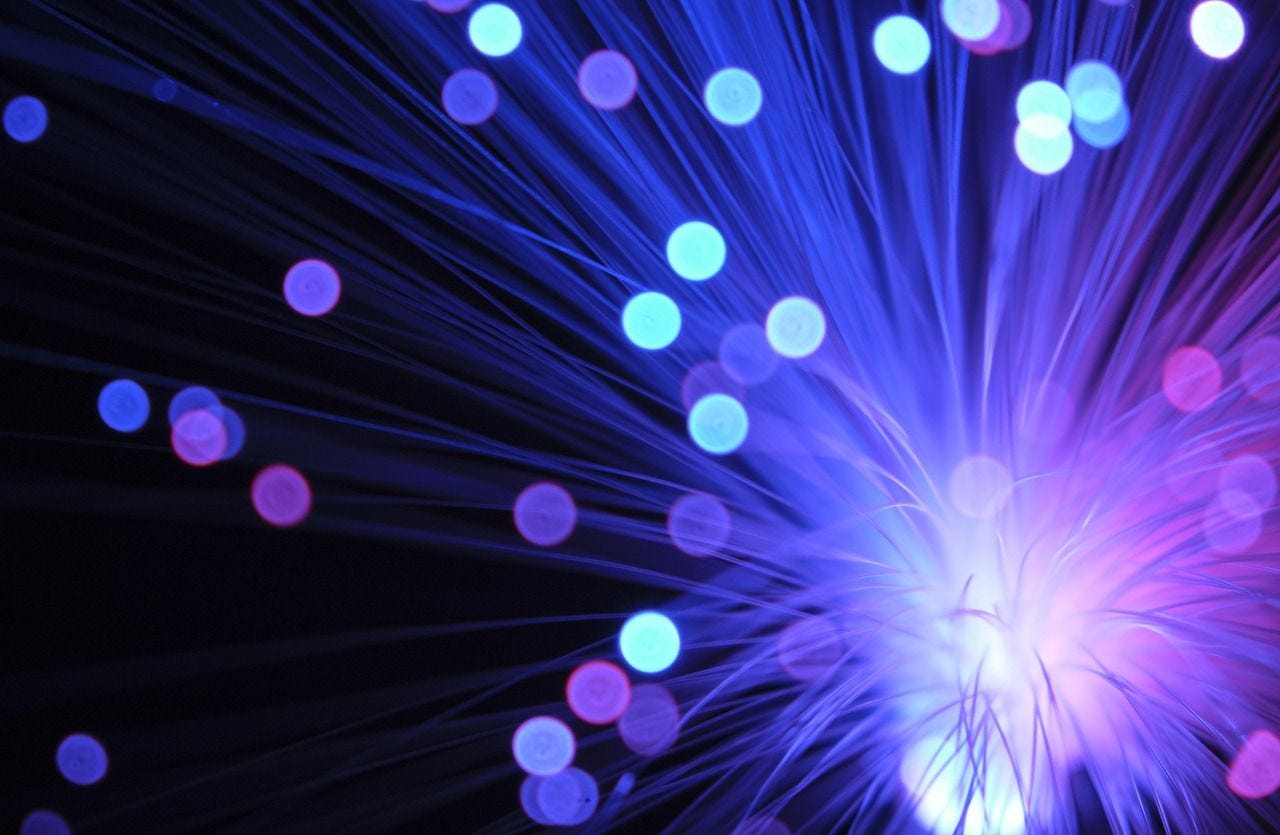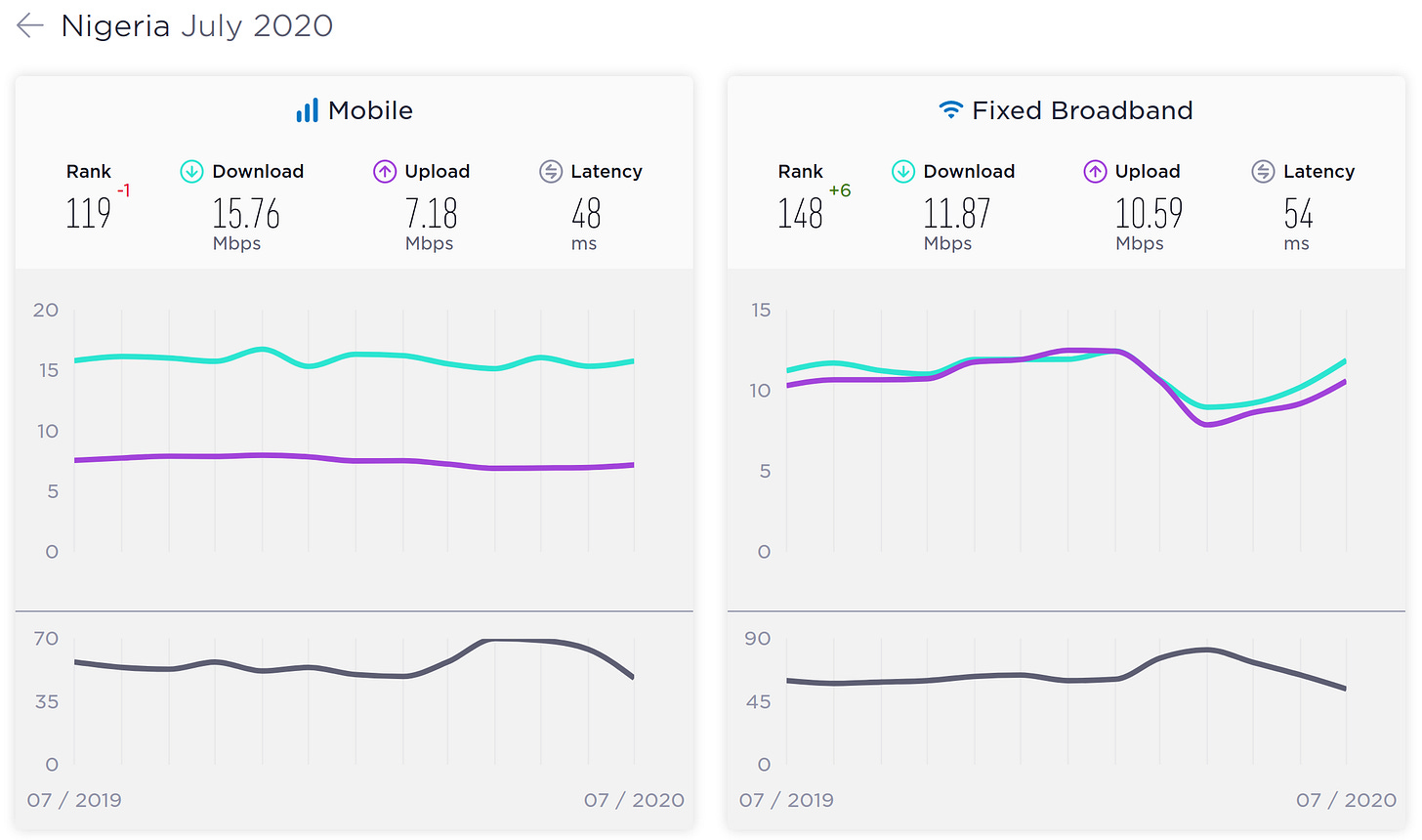The speed of internet access in Nigeria
The majority of people in Nigeria today access the internet through their mobile phones. What does the current infrastructure in the country allow with respect to speed of the internet? This article looks at typical download speeds that one can expect to
It is easy to get carried away by the potential of the internet and lose sight of the numbers behind the utilities we are creating. Today's technology companies are filled with rich user experiences that require a minimum amount of internet bandwidth for a frustration free experience. As a result of Covid-19, 2020 has proven to be the year where distributed computing is accelerated, and people all over the world have been forced to operate remotely where possible.
The world has come a long way since the days of dial-up internet through landlines. The majority of people in Nigeria today access the internet through their mobile phones. What does the current infrastructure in the country allow with respect to speed of the internet? This article looks at typical download speeds that one can expect to get across different locations in Nigeria.
While doing research for this article, the majority of sources about internet speed pointed to speedtest by ookla. According to Ookla, the mobile internet speed for Nigeria for the month of July 2020 was 15.76Mbps (download) and 7.18 Mbps (upload) while the fixed broadband speed was 11.87Mbps (download) and 10.59 Mbps (upload). You can find a typical country level report here.
The speedtest.net websites says:
"Results are updated mid-month for the previous month. January 1, 2019 onward countries must have at least 300 unique user results for mobile or fixed broadband to be ranked in either category. Prior to January 1, 2019 we required 670 unique user results for mobile and 3333 for fixed broadband."
Ookla's detailed report is not easily accessible. I had several questions about the chart above. What's the actual sample size? From what locations were the samples taken? I am usually very sceptical about overly summarised datasets. For a metric that bears so much significance in today's world, transparency should be the norm. So I made an inquiry to ookla.
Open technology for measuring the internet
I didn't hold my breath for a response from ookla. I continued my research and came across measurement lab (M-Lab). According to M-Lab:
"M-Lab provides the largest collection of open Internet performance data on the planet."
After obtaining access to the GCP MLab BigQuery project, I was able to get some data on internet speeds in Nigeria.

The data for Nigeria from M-Lab for 2020 (between January and August 30 2020) contains 347,899 samples. The samples cover 30 states with Lagos responsible for 78% of the samples. The data shows that for the year 2020, 75% of the sample had download speeds of 3.8Mbps or less with a mean speed of 3.6Mbps and the median of 1.34Mbps. This is significantly less than what is reported by speedtest for July 2020 and indeed for most of the past few years as evident in several reports. The speed (15.76Mbps) reported for July 2020 by ookla is only available for the top 5% of the samples that contributed to the data from M-Lab.

Internet speed across states
What connection speeds can one expect to get from the different states across the country? The sample size and range of connection speeds used to derive the mean values varied significantly across states, with Lagos contributing the most. Although the top speeds were recorded by samples from Lagos, Niger and Abuja, other states recorded higher mean download speeds.

A deep dive into the data available for Lagos might be useful to see the locations with typically good connections. One might also explore the effects of population density or living standards on the recorded download speeds. Note that although the MLab data contain information about upload speeds, this article only reports on download speeds.
So what?
How closely internet speed estimates reflect the target population has significance in several domains. It determines how accurately you can predict the dissemination of technology solutions for that target population and the successful adoption of such solutions. A badly predicted network speed would have a significantly negative effect on any product that depends on a baseline throughput for an optimal user experience. For instance what's the true market size for pain free streaming video media in Nigeria? How can you rethink digital media for a market with poor internet connection speeds? The earlier your product team knows about this, the earlier they can design the right product for the right market. For policy makers or those in a position to make decisions on the global growth an accessibility of the internet, it is essential that the feedback loop used to measure success is representative of the population that is being served.
Acknowledgements
The visualisations in this article were created in ObservableHQ using M-Lab NDT Data Set 2020-01-01–2020-08-30. The data were specifically obtained from the Bigquery table measurement-lab.ndt.unified_downloads




